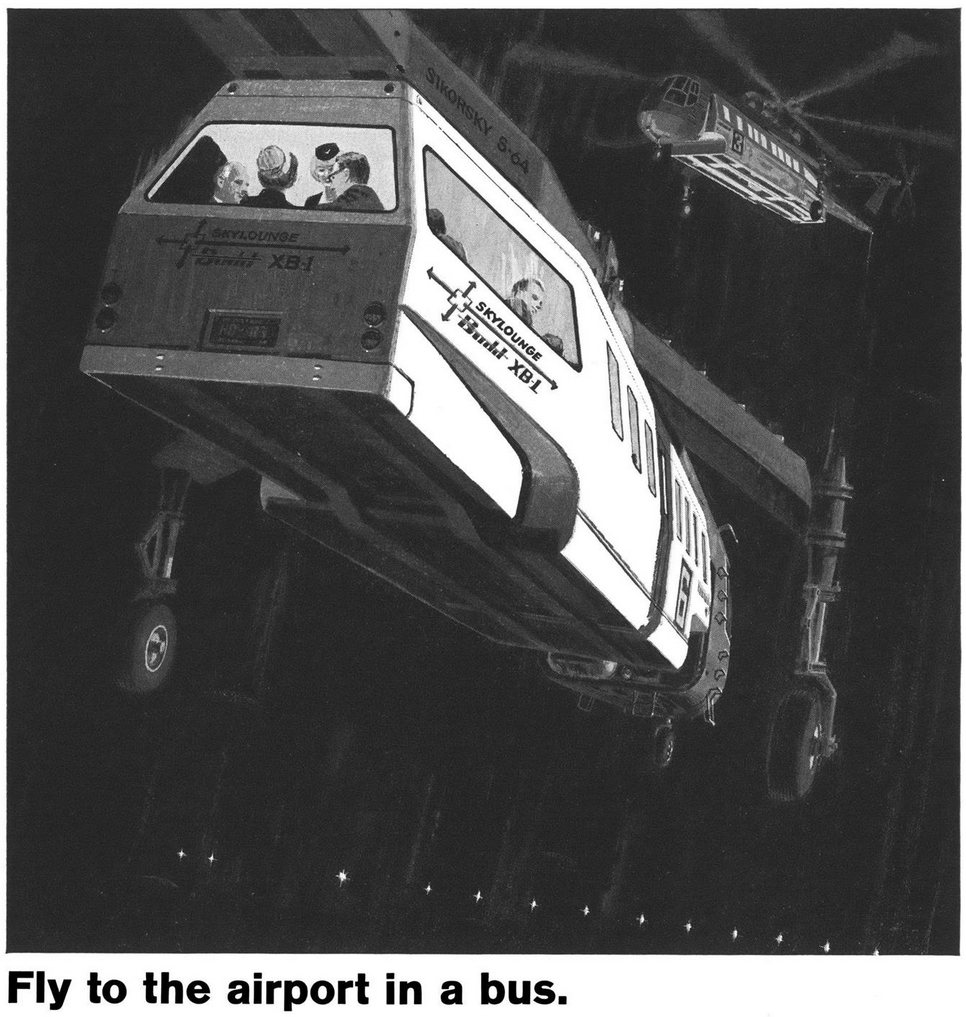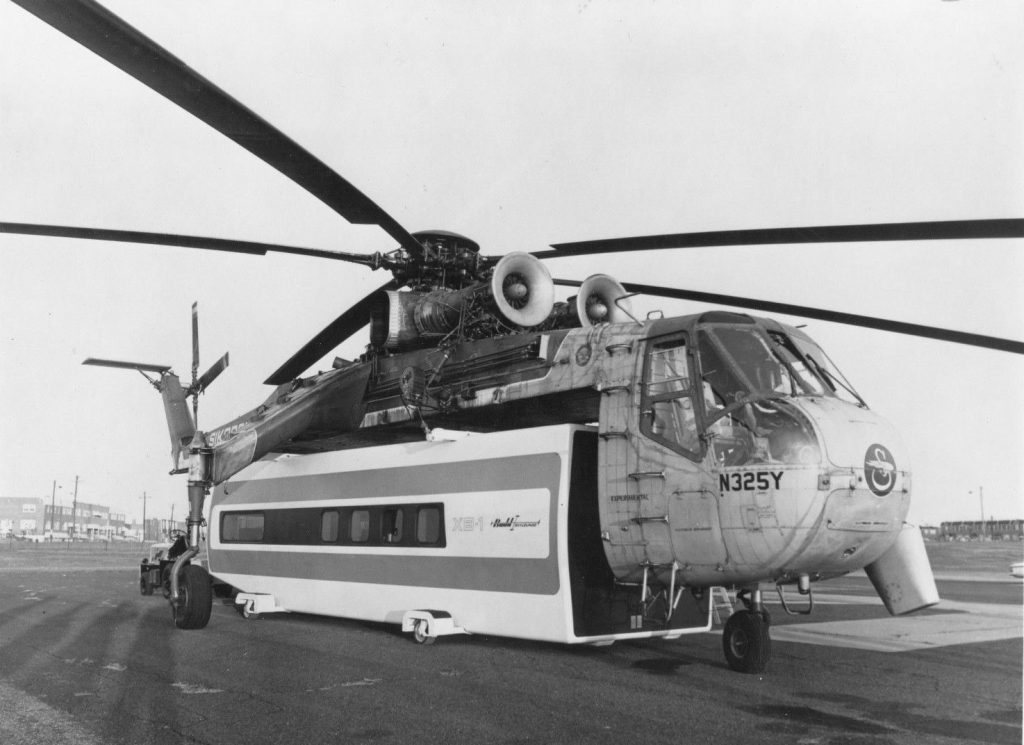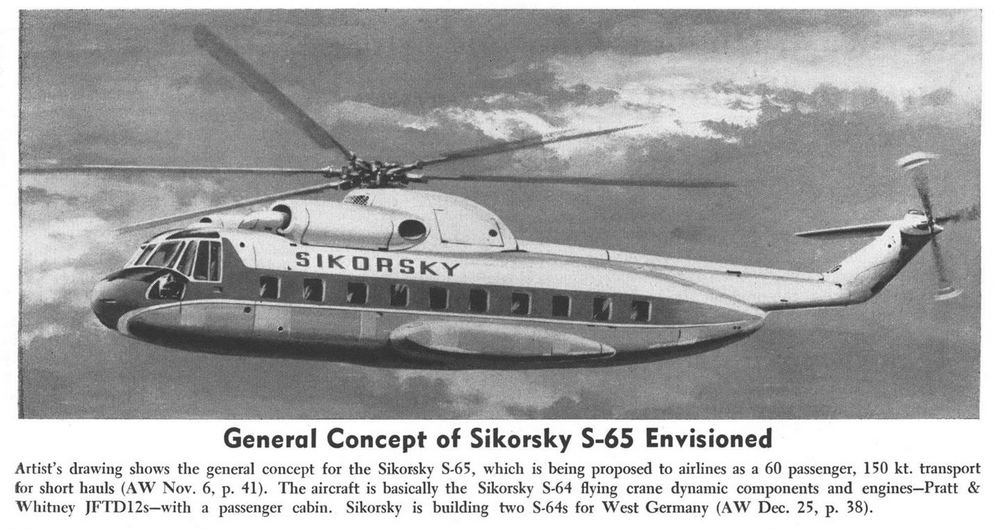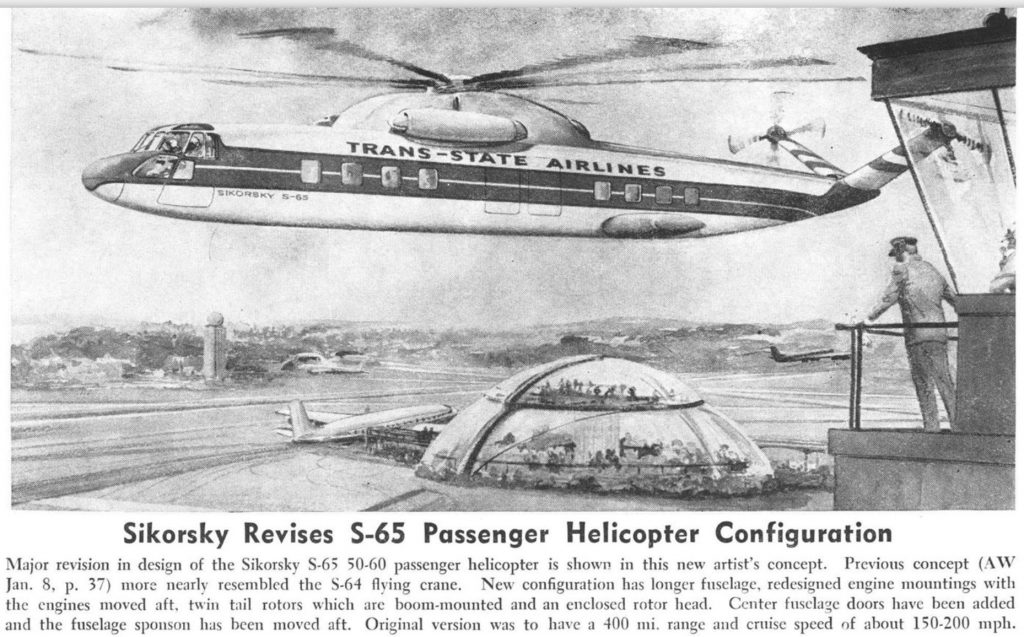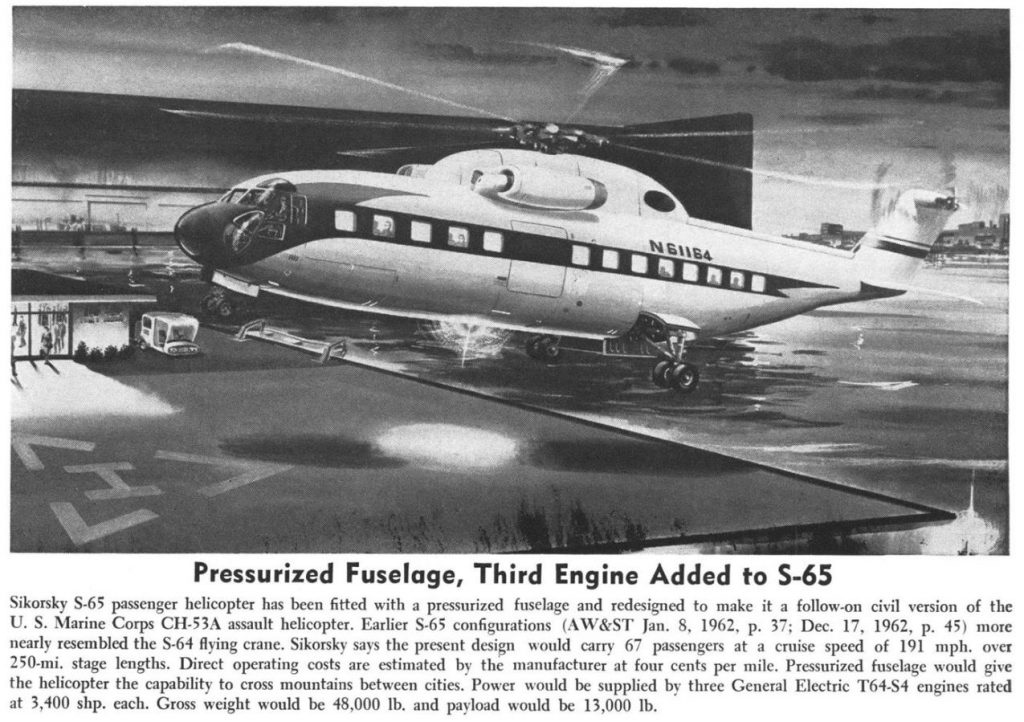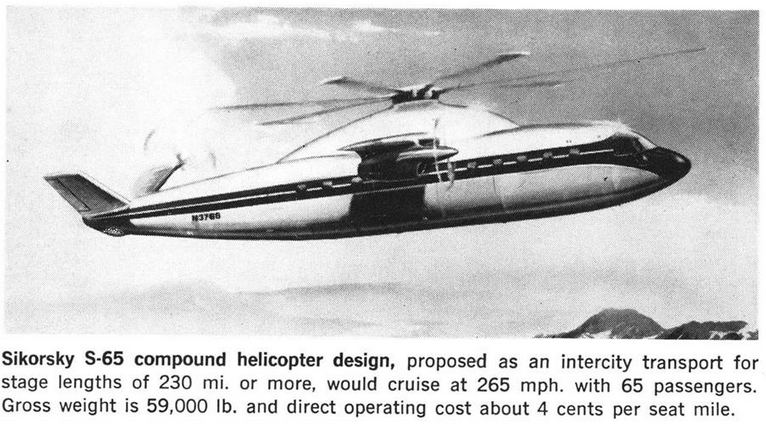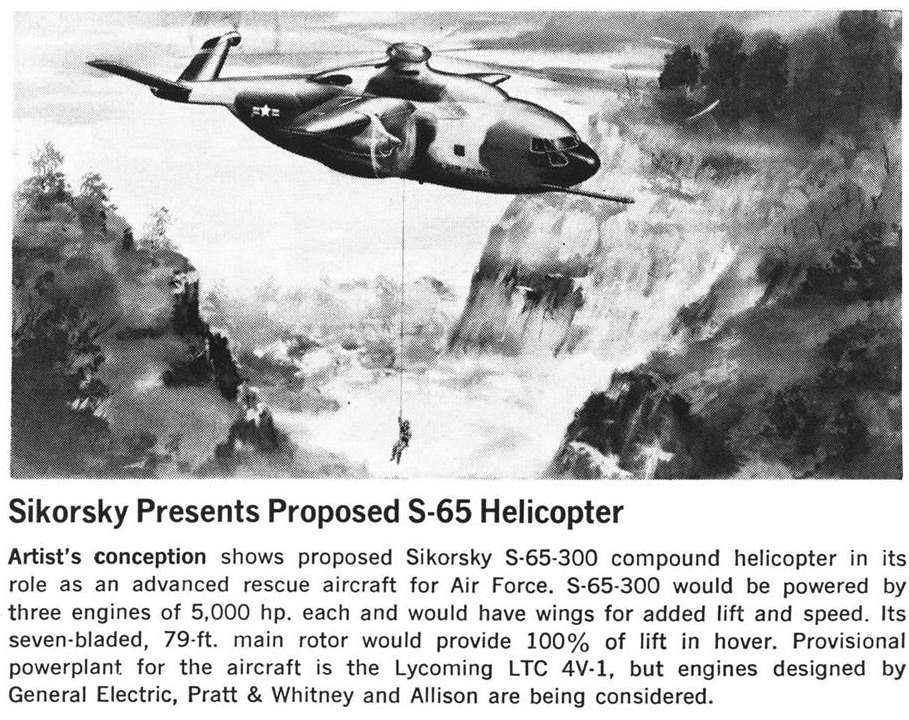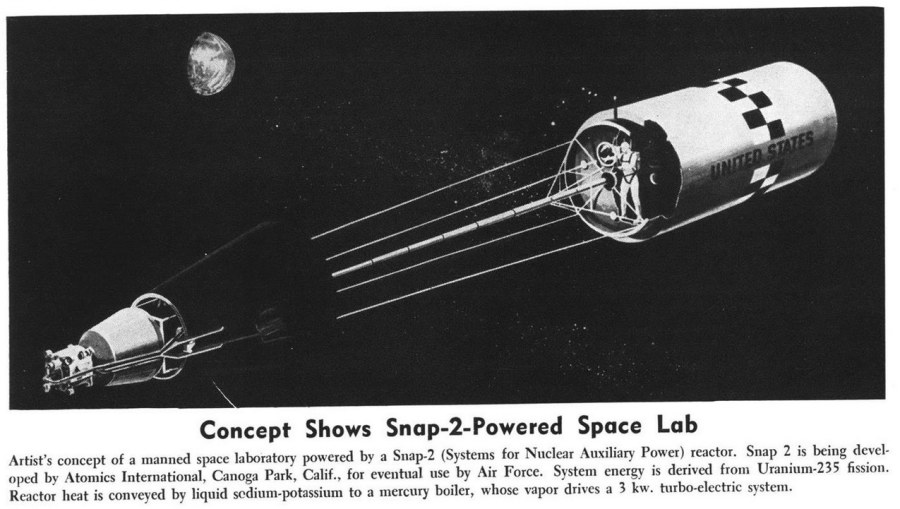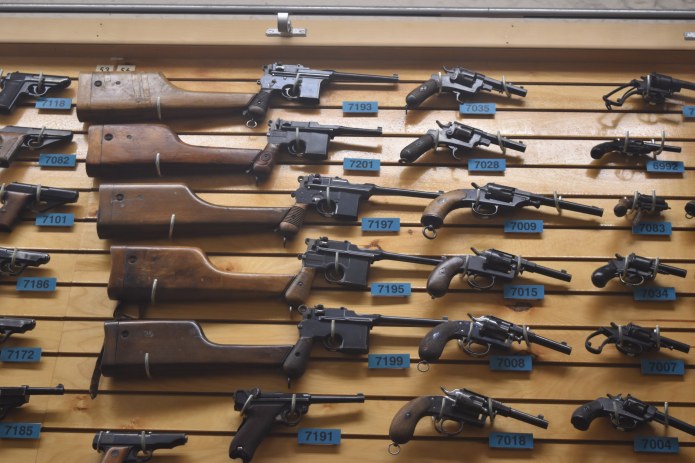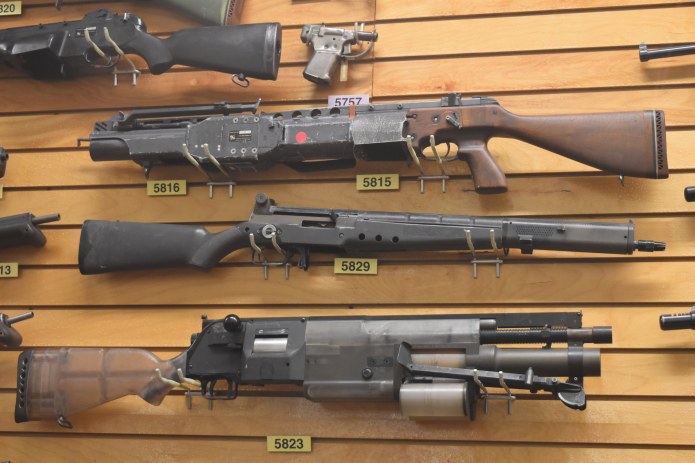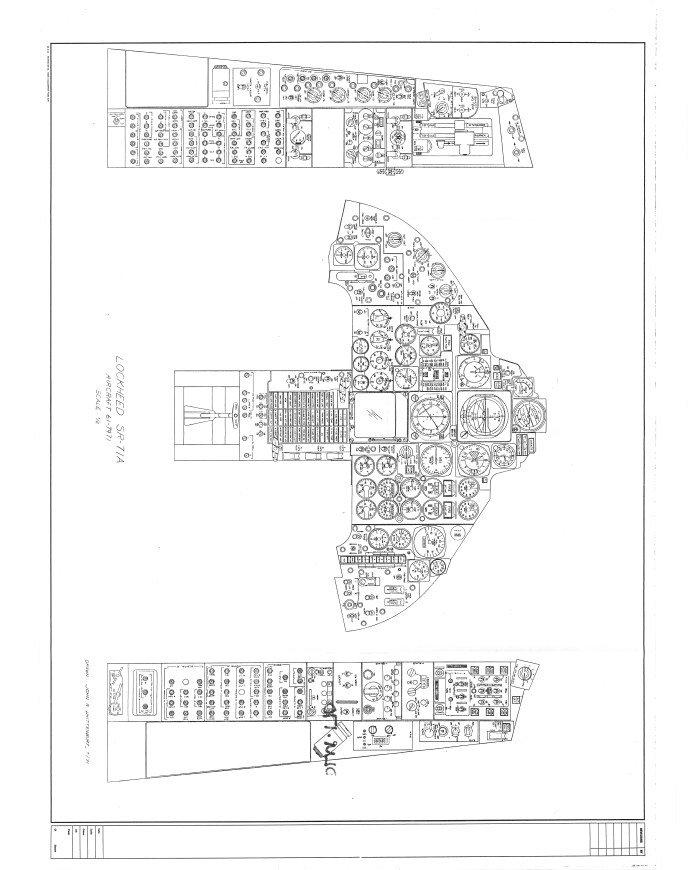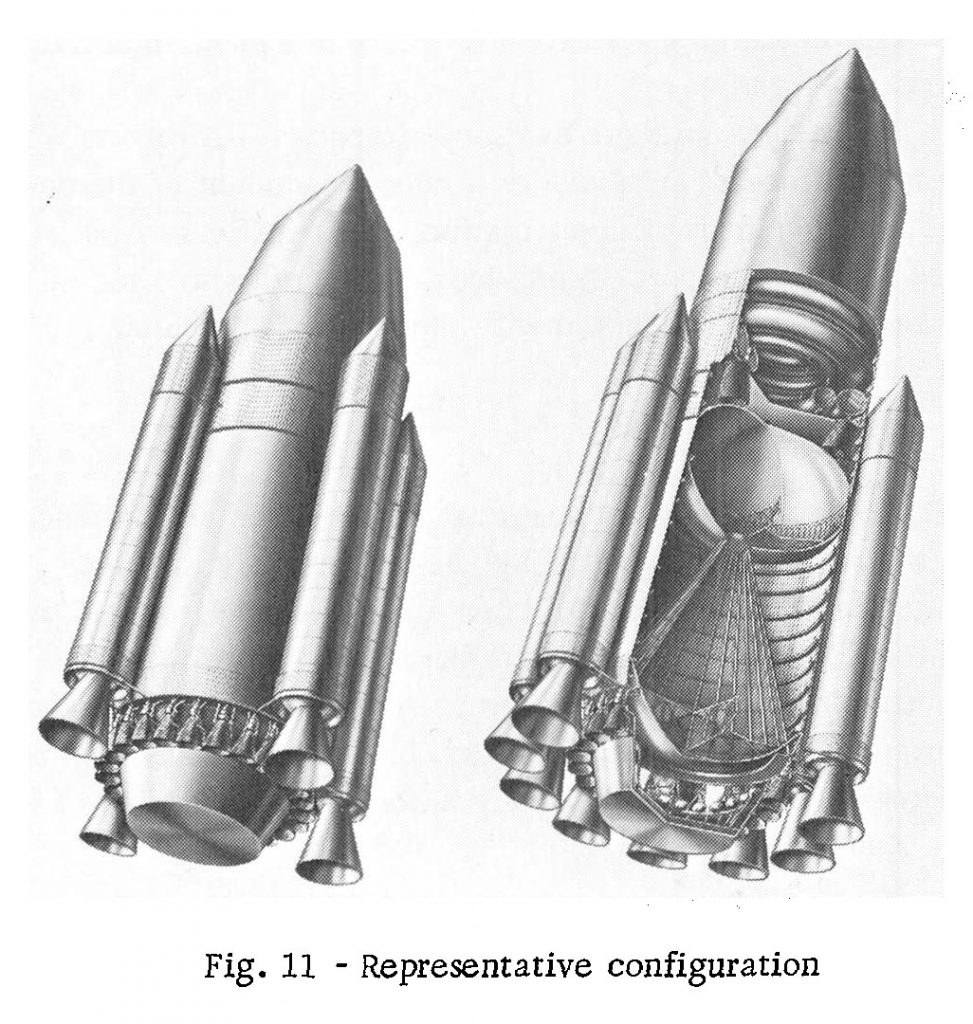At the same time that Sikorsky was working on the S-65 passenger helicopter (1967), The Budd Company (a manufacturer of rail cars) had their own idea… the Skylounge. It was a “people pod” to be carried by the S-64 Skycrane, but while the Skycrane did carry passenger pods from time to time for the military, the Skylounge was to be more “refined.” Along with being more civilian-friendly in terms of style and comfort, it was also intended to be carried on the ground by some form of truck, turning it into an actual bus. The bus would pick you up in the middle of your busy city, drive you to a convenient heliport and drop off the pod, which in turn would be picked up by a helicopter which would then fly you to the major airport on the outskirts of the city where you’d board your intercontinental jet and spend the next eight hours getting trashed on skybooze and harassing the stews.
Presumably, at some point someone likely asked the question “wouldn’t it be a whole lot easier and cheaper to just use regular buses and have passengers take a few seconds to step off the bus and onto the chopper?” and the idea evaporated.
